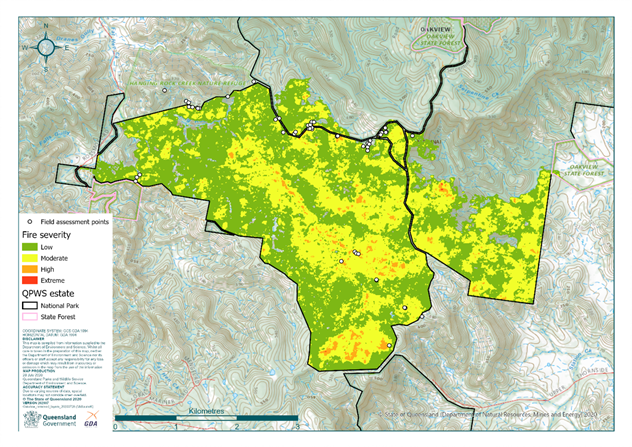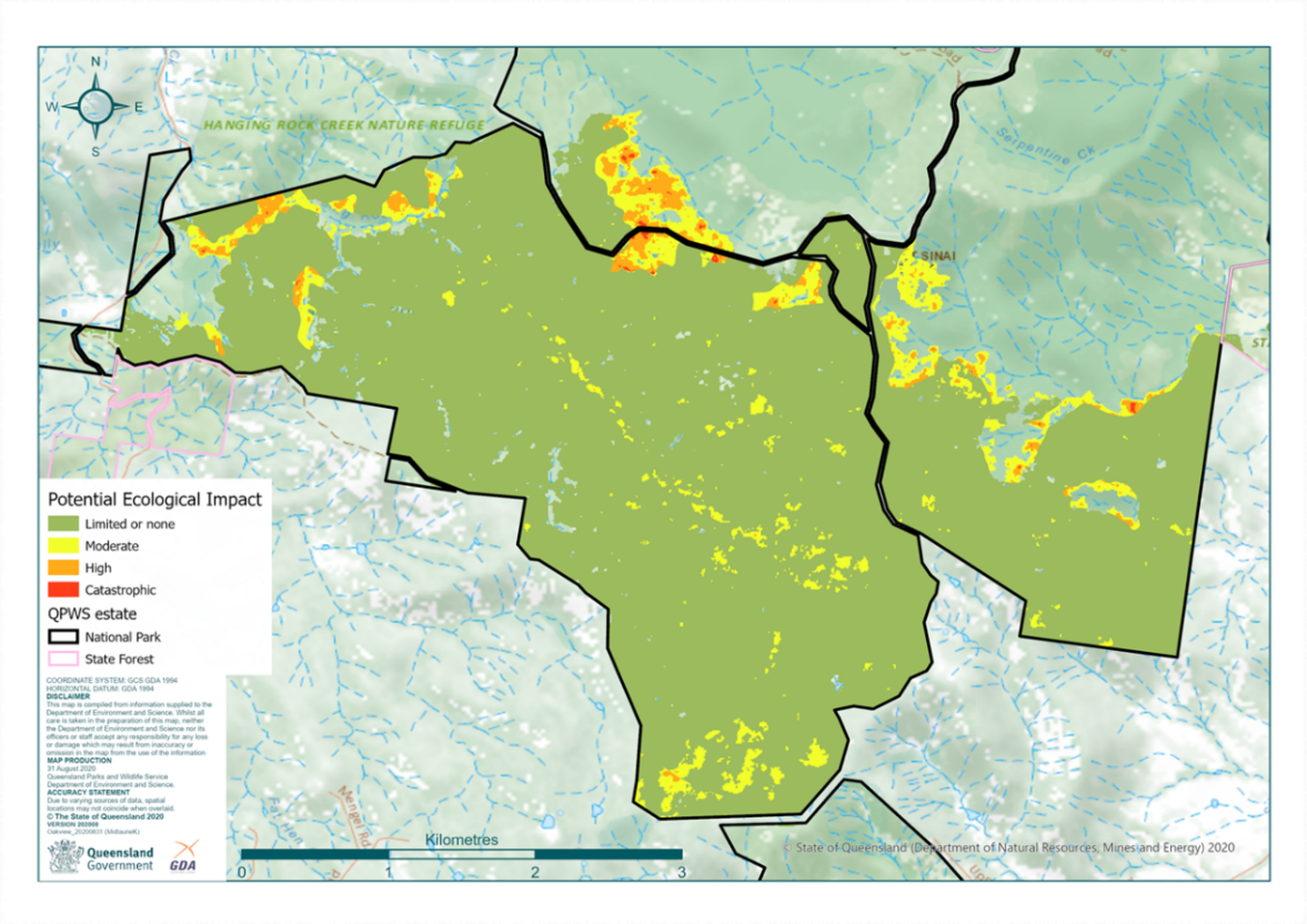Oakview National Park—Post-fire ecological assessment
In late 2019, a bushfire burnt ,438 hectares of Oakview National Park. A more detailed assessment of the ecological impacts of the fires was undertaken which is initiated by detailed fire severity mapping.
Fire severity


The level of fire severity was mostly low to moderate, although 32 hectares burnt at a high level of fire severity resulting in the tree canopy being partially consumed and loss of the understorey plants. A small area (< 1 hectare) burnt at an extreme level of severity which resulted in all the natural vegetation being completely consumed by the fire.
| Fire severity | Hectares |
|---|---|
| Low | 796.3 |
| Moderate | 609.6 |
| High | 32.3 |
| Extreme | 0.2 |
Description of effect on vegetation
- Low: canopy and subcanopy unscorched, shrubs may be scorched, fire-sensitive low shrubs may be killed.
- Moderate: partial canopy scorch, subcanopy partially or completely scorched, and/or fire-sensitive tall shrub or small tree layer mostly killed.
- High: full canopy scorch to partial canopy consumption, subcanopy fully scorched or consumed.
- Extreme: full canopy, subcanopy and understorey consumption.
Ecological impacts


The fire adapted ironbark woodlands, eucalypt forests and woodlands were the dominant plant communities impacted by the 2019 bushfire (93% of the fire extent). Most of these areas were classified as having limited potential ecological impacts, where plant species can recover relatively quickly due to having a high tolerance to fire. Across these habitat types, approximately 30 hectares likely had moderate to high ecological impacts. These areas included moist gullies with a fire sensitive understorey that normally provide a refuge for wildlife during and after a bushfire, and which will be slow to recover from the bushfire.
In Oakview National Park, the geographically restricted semi-evergreen vine forests are less extensive in area (2,110 hectares) and are fire sensitive. Fires of even a low level of severity can result in a moderate level of ecological impacts and a reduced capacity to recover from fire. More than 68 hectares of the vine forests were classified as having a moderate level of ecological impacts, almost 30 hectares experienced a high level of ecological impacts, and 1.5 hectares experienced catastrophic ecological impacts.
| Potential ecological impact class | Vine forests (fire sensitive canopy and understorey) | Dry-moist eucalypt woodland - open forest (fire adapted canopy and understorey) |
|---|---|---|
| Limited or none | 0 | 1307.6 |
| Moderate | 68.7 | 30.8 |
| High | 29.5 | 0.2 |
| Catastrophic | 1.5 | 0 |
Read the full report: Post-fire Assessment Report— Natural Values: 2019 bushfire, Oakview National Park, South East Queensland Region June 2021 (PDF, 1.5MB)


